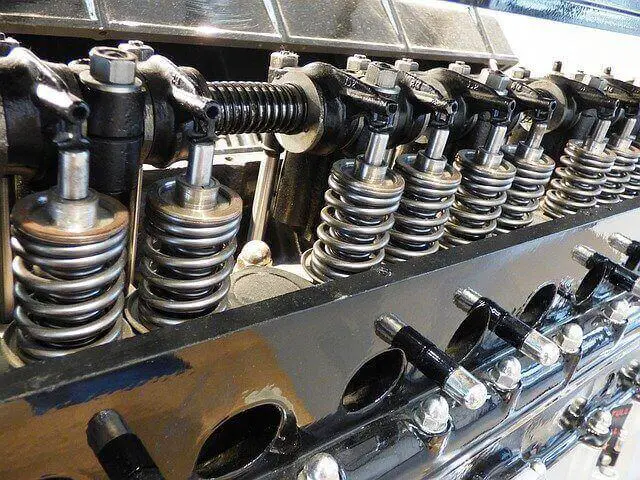Ensuring that the parts you’re purchasing for your car or truck are compatible is crucial for a smooth-running vehicle. Whether you’re replacing a worn-out component or upgrading for better performance, knowing how to check compatibility can save you time, money, and frustration.
In this article, we’ll walk you through the steps to verify the fitment of car parts, simplifying the process so you can shop with confidence. Whether you have a specific part number in hand or are browsing for the perfect accessory, understanding these guidelines will help you make informed decisions for your vehicle’s maintenance and enhancement needs.
How to Check Compatibility of Car Parts?
One of the great resources for checking car parts compatibility is TascaParts.com.
Now I will show you the steps with images on how you can easily complete the process:
There are two options for completing this process:
- If you already have a part
- If you do not have a part
Let’s see first If you already have a part:
Step 1: Input the part number or part name into the search bar at the top of the webpage and press “Enter” or click on the magnifying glass icon.

Step 2: On the product page, click on the “Make sure this part fits your car” link. Select your car’s year, make, model, trim, and engine.

Step 3: Check the highlighted information to see if the part fits your vehicle.

Let’s see first If you already have a part:
Step 1: Use the Vehicle Picker tool found on the website.

Step 2: Select your car’s year, make, model, trim, and engine.





Step 3: Choose either “Parts” or “Accessories” and continue selecting until you find the desired part.

Step 4: Click on the part to visit its page.

Step 5: Check the highlighted information to see if the part fits your vehicle.

If you do not like it, here are some more tips for checking the compatibility of car parts.
To start browsing, select a category.
You may now continue exploring the rest of the store; all of the categories you visit will be filtered by your vehicle; however, your results will not be sorted by car if you use the search tool.
The blue “Fitment Match” icon indicates which products are compatible with your car. The “Product Note” section details any unique requirements for the product to fit your vehicle. For example, the following brake pads will only fit Commodores equipped with “Front Brembo calipers.”
General Fitment
Some products are not vehicle-specific or lack relevant information. While most of these products are not vehicle-specific, such as car care products, tools, and electronics, there are some mechanical devices for which vehicle fitment data exists. Call the sales representative if you are unsure whether an item fits your vehicle.
Check My Parts
If you are unsure if a component or product is compatible with your vehicle, you can use “Check My Items.” Add all the parts you consider into your shopping cart and click on the “Check My Parts” option.
One of our parts specialists will then analyze your request and validate the suitability of the parts or recommend the correct positions if you have made the wrong selection.
OEM Part Numbers
Original Equipment Manufacturer (OEM) part numbers are specific to each vehicle model and its respective parts. By matching the OEM part number from your vehicle to the part you’re considering, you can ensure a perfect fit. Manufacturers often list these numbers in their parts catalogs or on their websites.
Online Compatibility Tools
Many auto parts retailers and manufacturers offer online tools where you can input your car’s make, model, and year to find compatible parts. These tools often have extensive databases and can provide a list of parts guaranteed to fit your vehicle.
Professional Consultation
Seeking advice from a professional mechanic or an automotive expert can be invaluable. They have experience and knowledge about different car models and can provide insights on compatibility that you might not find in catalogs or online. Additionally, they can offer practical advice on installation and performance.
Types of Car Parts

Although there are several classifications for automotive components, we will focus on two of the most basic ones here are Original Equipment parts and original equipment manufacturer.
OE Parts
The term “OE” refers to original equipment. The same manufacturer has manufactured a genuine or authentic equipment part as the vehicle; it is a natural or original part from the same factory.
For example, BMW OE parts are similar to the BMW part numbers and are packaged in official BMW packaging.
OE components are the most expensive replacement parts, but they are also the best quality. You can’t go wrong by buying an OEM item for your car.
OEM Parts
In contrast to genuine or original OE parts, OEM parts are aftermarket parts. OEM refers to the original equipment manufacturer. The parts made by a company with the permits to manufacture vehicle parts are possible through a company that has these permissions.
OEM components are less expensive than OE parts in the aftermarket, but they are also considered a high-quality and worthwhile substitute.
Aftermarket Parts
These are parts made by companies other than the vehicle’s original manufacturer. They are designed to function the same, or in some cases, even better than the original parts. Aftermarket parts are often less expensive and offer a wide range of choices, sometimes providing improved performance or different aesthetics compared to OE/OEM parts.
Refurbished or Reconditioned Parts
These are used parts that have been restored to a functional or like-new condition. They typically come from vehicles that are no longer in service. Refurbished parts are a cost-effective option, especially for older vehicles where new parts may no longer be available.
Salvage Parts
Salvage parts are taken from scrapped or decommissioned vehicles. These are not refurbished but are still in working condition. They are often the cheapest option but come with no guarantee of their longevity or performance. Salvage parts are ideal for older models or temporary fixes.
Is there an app or website that can tell me the compatibility of car parts?
Yes, there are several apps and websites available that can help you determine the compatibility of car parts. Here are a few popular ones:
- Car-Part.com: This website allows you to search for used auto parts and provides compatibility information based on your vehicle’s make, model, and year.
- RockAuto.com: RockAuto offers a comprehensive catalog of auto parts, and their website allows you to search for parts by vehicle make, model, and year to ensure compatibility.
- AutoZone: AutoZone’s website and app feature a “Shop by Vehicle” tool, allowing you to enter your vehicle’s information to find compatible parts and accessories.
- Amazon Automotive: Amazon’s automotive section includes a feature where you can input your vehicle’s details to find compatible parts and accessories.
My Opinion
Interchangeability and compatibility of automotive components are prominent issues in the industry. Technically, there is no automobile does not share at least one element with another. This is true even for electric cars: The Tesla Model Y and Model 3 share about 76% of their components!
Your website benefits your company, other companies, and customers, including compatibility lists and a cross-reference tool. You must consider all the relevant data a potential buyer will provide, the filtering methods you will use, and the overall user experience of your marketplace or website.
Above all, your relevant data must be complete, accurate, and properly formatted. The ACES and PIES standards are widely used, so it would be wise to familiarize yourself with these databases. Your catalogs must be free of holes and corrupted data, which means that you will need to update them regularly according to ACES and PIES standards.

